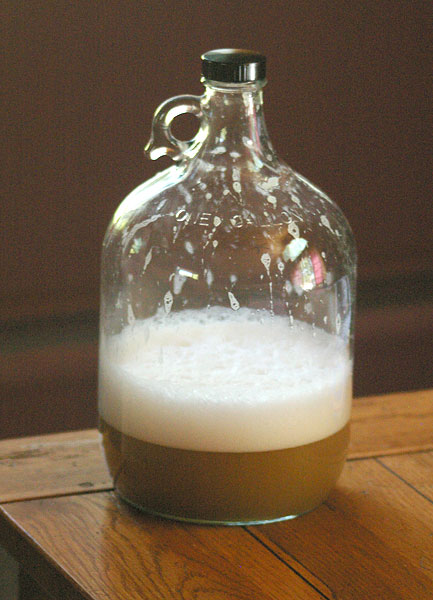mhenry41h
Well-Known Member
My experience with Brett is that it will take off quickly but will go through cycles. Watch it closely as it should stop and start again...perhaps even twice or more. I read that a week to 10 days is the sweet spot.









![Craft A Brew - Safale S-04 Dry Yeast - Fermentis - English Ale Dry Yeast - For English and American Ales and Hard Apple Ciders - Ingredients for Home Brewing - Beer Making Supplies - [1 Pack]](https://m.media-amazon.com/images/I/41fVGNh6JfL._SL500_.jpg)









adc123 said:he probably means he boils and cools in his kettle, then pitches directly in there, maybe into a fridge for temp regulation. I have heard of that before; its just one less vessel to clean. However, kettles need to be extra-clean and sanitary(all the nooks and crannies) to prevent infection.
Oldsock said:I have an IPA that is 10 days into fermentation in with 100% Trois (two stage starter on a stir-plate, ended up at 1.5 L). Had the beer fermenting at 66 F ambient until this morning, when I moved it to an area in the mid-70s to help it finish out. What sort of attenuation have people seen? I did pale/wheat mostly with ½ lb of carapils, and mashed a bit cool. Hoping for low-80s apparent attenuation.
Hoping for a good combination with the fruity hops (Citra, Centennial mostly) and the fruity/funky yeast.
I have an IPA that is 10 days into fermentation in with 100% Trois (two stage starter on a stir-plate, ended up at 1.5 L). Had the beer fermenting at 66 F ambient until this morning, when I moved it to an area in the mid-70s to help it finish out. What sort of attenuation have people seen? I did pale/wheat mostly with ½ lb of carapils, and mashed a bit cool. Hoping for low-80s apparent attenuation.
Hoping for a good combination with the fruity hops (Citra, Centennial mostly) and the fruity/funky yeast.

Thinking about a small dry hop with nelson sauvin and a touch of citra or sorachi ace.
Mike - I am 2 weeks into my fermentation and am at 73% attenuation. I started at 1.045, after 5 days I was down to 1.020, and now, after 14 days, I am at 1.012. I started the fermentation at 70°F. After taking a reading on day 5 I ramped it up to 75°F. I am hoping it will drop another several points to 1.010 at least. I'd feel better at 1.008.
Aroma and taste are tending towards ripe tropical fruit. Perhaps less crisp than it was at my last sampling on day 5.
Here's a pic of how things look in the fermenter (Day 14):
I am still enjoying my 100% Brett Drie Bitter that was hopped throughout with Nelson. The hop aroma is still strong after almost 3 months.
http://jeffreycrane.blogspot.com/2012/05/brett-series-extra-special-bretter.html
I was surprised with my attenuation numbers and that was the first time I put them all together. And something else interesting I just noticed is that a couple of these batches were split and brewed with Sacc strains.
Apparent Attenuation
The Original Bitter - S-04 - 75% Brett Drie - 79%
Table Saison - WY3711 - 100% Brett Drie - 103%




I forgot to add that mine was a 10 gal batch. The wlp550 half got to 1.010 vs the 1.007 with brett.
I grew the brett up in a 2l starter for 3 weeks.
barrooze said:Did you use a stirplate?
Wow. I had no idea. Thanks so much! Is the general consensus that the different strains can be as different as Sacc Ceriv strains can be (001 and 570 are night and day apart IMO)?